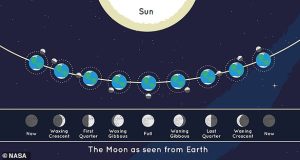Key Takeaways
- Earth has a temporary second moon called 2025 PN7, confirmed by NASA
- The 19-meter wide asteroid will remain in Earth’s vicinity until 2083
- It’s the smallest and least stable of six known quasi-moons with Earth-like orbits
- Unlike our main moon, it’s not gravitationally bound and requires telescopes to view
NASA has confirmed Earth temporarily hosts a second moon—a small asteroid called 2025 PN7 that will accompany our planet until 2083. Discovered by the Pan-STARRS observatory in Hawaii, this 19-meter wide space rock has been following a similar solar orbit since the 1960s.
What Are Quasi-Moons?
Quasi-moons are asteroids that orbit the Sun on paths similar to Earth’s, creating the appearance of orbiting our planet. Unlike our permanent moon, they aren’t gravitationally bound to Earth and will eventually drift away. 2025 PN7 is classified as the smallest and least stable among six known quasi-moons with Earth-like trajectories.
Carlos de la Fuente Marcos from Complutense University of Madrid noted these objects are “full of surprises” and explained that 2025 PN7 went undetected for so long because it’s “small, faint and visibility windows from Earth are rather unfavourable.”
Historical Context and Discovery
Scientists first identified quasi-satellites in 1991 with the discovery of ‘1991 VG’—initially suspected by some as an alien probe. Researchers now recognize these natural objects as part of a secondary asteroid belt within Earth’s orbital region around the Sun.
While 2025 PN7 has accompanied Earth since the 1960s, this is relatively brief compared to another famous quasi-moon, Kamo’oalewa, which maintains an Earth-related orbit for approximately 381 years.
Orbital Characteristics
2025 PN7 maintains varying distances from Earth, ranging between approximately 2.8 million miles (4.5 million km) and 37 million miles (59 million km). These objects belong to a special category called Arjunas, which move in synchronization with Earth’s solar orbit.
Future Discoveries and Research Importance
The newly operational Vera C. Rubin Observatory in Chile may uncover additional quasi-moons during its scans. Alongside quasi-moons, Earth occasionally hosts ‘minimoons’—objects that temporarily orbit our planet, though only four have been identified and none currently remain.
According to The Planetary Society, studying these celestial companions helps scientists understand asteroid origins and composition, potentially revealing whether they come from the main asteroid belt, lunar impacts, or breakup of larger objects. This research provides crucial insights into how asteroids might threaten Earth.







